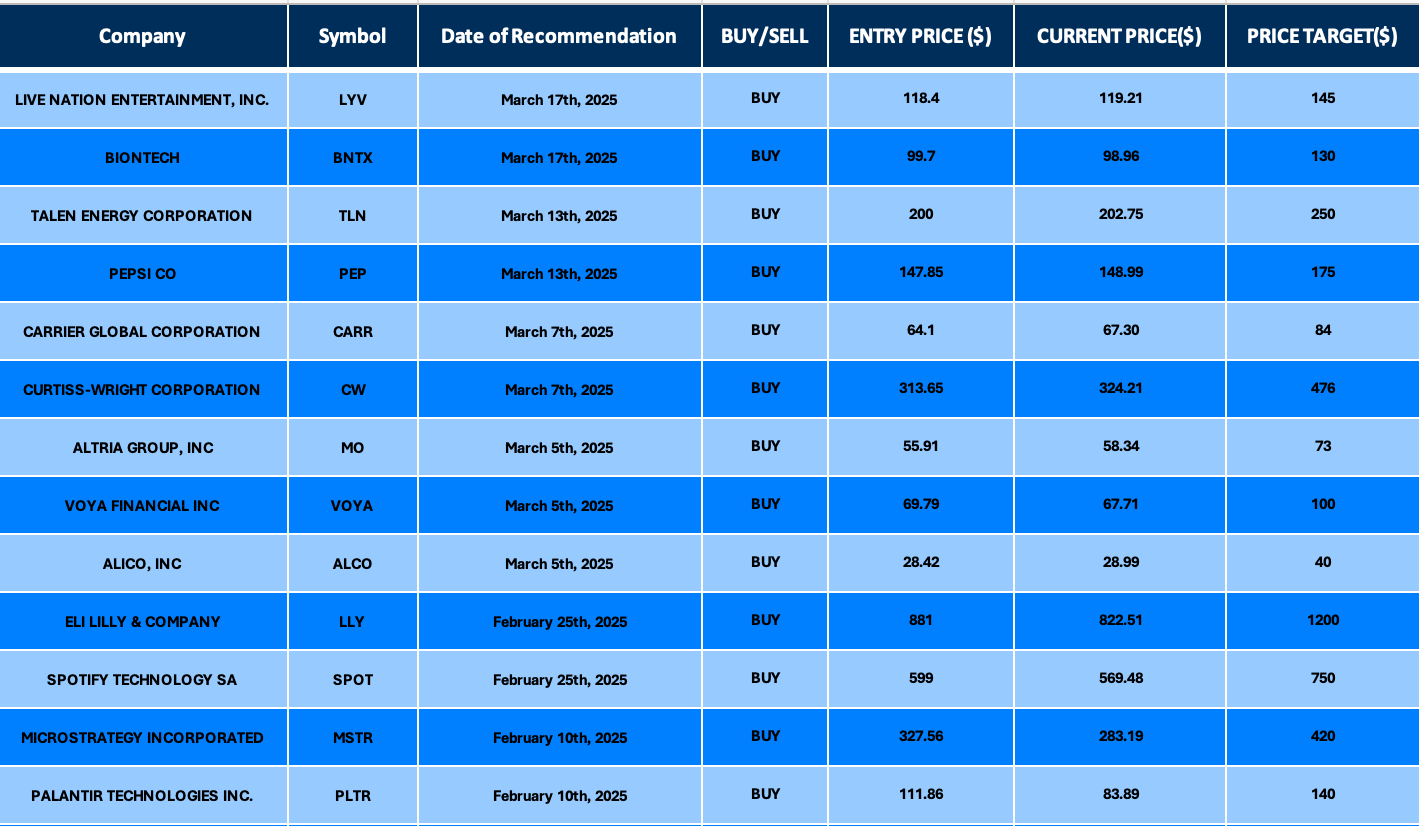
Date Issued – 8th April 2025
Preview
Global markets remain volatile as escalating U.S.-China trade tensions weigh on sentiment. China pledged to retaliate against U.S. tariff hikes, propping up markets with stimulus and yuan devaluation, while Hong Kong’s Hang Seng Index rebounded 2.87%. The S&P 500 narrowly avoided a bear market after dropping 21% intraday, while hedge funds reduced net leverage to historical lows amid mounting losses. Japanese equities surged 6% on hopes of a U.S.-Japan trade deal and a weaker yen, though risks linger. Oil prices rose 1% following last week’s sharp selloff, but analysts warn of persistent demand concerns tied to recession fears. Investors are advised to adopt defensive strategies, focusing on resilient sectors and monitoring geopolitical developments.
China Escalates Trade War Amid Market Support Measures
China has vowed to retaliate against the latest U.S. tariff threats, intensifying the trade standoff between the world’s two largest economies. Beijing signaled its determination to shield markets, with central bank actions weakening the yuan to boost exports and state-linked funds injecting record inflows into equities. Despite a rebound in the Hang Seng China Enterprises Index (+2.87%), the yuan hit a two-month low offshore as fears of decoupling grow. President Trump’s escalating tariffs, now reaching a cumulative rate of 104%, have dimmed hopes for a near-term resolution, with both sides adopting increasingly entrenched positions. Beijing is pivoting towards domestic consumption and stimulus to offset external pressures, while Hong Kong looks to diversify trade relations amid its own tariff challenges.
Investment Insight
Investors should brace for prolonged volatility in China-related assets as trade tensions intensify. While Beijing’s market interventions may stabilize equities in the short term, the weaker yuan and heavy reliance on stimulus suggest longer-term risks. Diversification into emerging markets with lower trade exposure to the U.S. or sectors tied to domestic Chinese consumption could mitigate downside risks.
S&P 500 Teeters on Bear Market Amid Tariff Uncertainty
The S&P 500 briefly fell into bear market territory on Monday, dropping 21% from its February high of 6,144 before recovering to close at 5,062, narrowly avoiding an official bear market designation. The tech-heavy Nasdaq-100, however, officially entered a bear market on Friday. Investor sentiment remains fragile as markets react to mixed signals from the White House regarding the longevity of tariffs. Monday’s 4.7% intraday decline highlights the mounting pressure on equities, with analysts noting this could become the second-fastest bear market in history after the 2020 pandemic crash.
Investment Insight
The risk of continued market volatility underscores the importance of a defensive approach. Investors should consider rotating into sectors that are less sensitive to trade headwinds, such as healthcare and utilities, while maintaining liquidity to capitalize on potential buying opportunities during market dislocations.
Hedge Funds Cut Risk as Markets Plunge on Trade War Fears
Global hedge funds tracked by Morgan Stanley reported mounting losses last week, with year-to-date performance turning negative (-3%) as markets reeled from escalating U.S.-China trade tensions. The S&P 500 and FTSE fell over 10% and 6%, respectively, while oil hit a four-year low, reflecting fears of a global recession. Hedge funds sharply reduced net leverage, with U.S. long-short funds dropping to 37%, near historical lows. Export-driven Asian markets bore the brunt of the selloff, with Hong Kong’s Hang Seng Index suffering its steepest decline since 1997. Analysts warn of heightened volatility amid tariff uncertainty, suggesting further downside risk for equities.
Investment Insight
Amid significant deleveraging by hedge funds and ongoing market volatility, a risk-off strategy remains prudent. Investors should prioritize defensive sectors like consumer staples and fixed income while maintaining a cautious stance on export-reliant markets. Monitoring liquidity conditions and hedge fund positioning could offer early signals of market stabilization.
Japanese Stocks Surge on Tariff Deal Hopes and Yen Weakness
Japanese equities rallied sharply on Tuesday, with the Topix jumping 6.3% and the Nikkei 225 gaining 6%, marking their largest single-day increases since August. Optimism surrounding a potential U.S.-Japan tariff deal, sparked by a call between Prime Minister Shigeru Ishiba and President Trump, fueled the rebound. Exporters led the rally, buoyed by a weaker yen, as Hitachi surged 14% and Toyota rose 7.2%. Banking stocks also outperformed, with Mitsubishi UFJ Financial Group climbing 13% intraday. Despite the gains, both indices remain down over 7% since the tariff announcement on April 2, underscoring lingering trade-related risks.
Investment Insight
The rebound in Japanese equities highlights the market’s sensitivity to trade developments and currency movements. Investors should stay attuned to further U.S.-Japan negotiations while considering sectors like exporters and financials that benefit from yen weakness and improving trade sentiment. However, caution is warranted as the broader trade environment remains uncertain, suggesting the importance of diversification within Asia-Pacific portfolios.

Oil Prices Rebound 1% Amid Volatile Markets and Tariff Concerns
Oil prices rose about 1% on Tuesday, with Brent crude at $64.87 per barrel and WTI at $61.37, recovering slightly from a near four-year low following last week’s 14%-15% slump driven by U.S.-China tariff tensions. The relief rally was supported by steadier equity markets, though analysts warn of persistent downside risks as escalating trade conflicts threaten global growth and energy demand. ING and other market watchers caution that further tariff escalation, including President Trump’s proposed 50% levy on Chinese goods, could deepen recession fears and weigh on crude prices. Inventory data later this week will provide additional clues on demand trends.
Investment Insight
With oil prices remaining vulnerable to trade-driven demand shocks, investors should carefully monitor geopolitical developments and economic indicators for clarity on global energy trends. A defensive approach in energy markets, focusing on high-quality producers with strong balance sheets, can help mitigate downside risks during periods of heightened volatility.
Conclusion
Global markets are navigating heightened uncertainty as trade tensions, recession fears, and policy responses dominate investor sentiment. While rebounds in Japanese equities and oil prices offer brief relief, downside risks persist across equities, commodities, and currency markets. Defensive positioning remains critical, with opportunities emerging in less trade-sensitive sectors and regions. As central banks and governments intervene to stabilize markets, monitoring liquidity conditions and diplomatic developments will be key to anticipating shifts. Investors should remain cautious, prioritizing diversification and quality assets to weather continued volatility and capitalize on potential recovery scenarios in the coming weeks.
Upcoming Dates to Watch
- April 10th, 2025: US CPI
- April 11th, 2025: US PPI
- April 16th, 2025: Industrial Production
Find below some of our Buy/Sell Recommendations. Balfour Capital Group is a distinguished global boutique investment management firm with $350 million AUM and over 1000 Clients.

Disclaimer: This post provides financial insights for informational purposes only. It does not constitute financial advice or recommendations for investment decisions.




